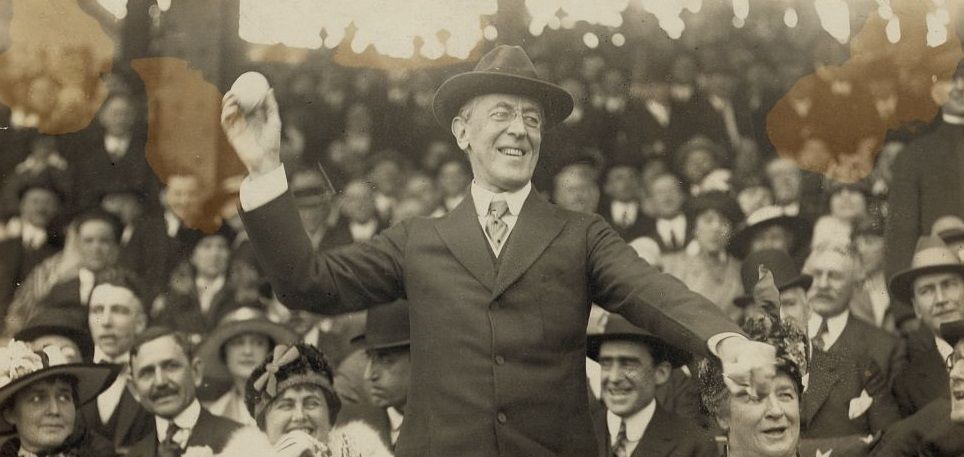Conserving Liberal Democracy: A Reply to Arnold Kling on the "Regulatory State"

The creation, proliferation, and persistence of liberal democracy in the last century is a triumph which we should neither underestimate nor take for granted. For liberals, the protection of liberties, the strengthening of democratic accountability, the quest for lawfulness, the fostering of new capabilities and proliferation of old ones, as well a national culture committed to these moral goods, are the chief merits of this system.
But for what Matt McManus has called “right-wing liberals,” and even for straightforwardly small-c conservatives living in liberal democracies, there are strong, principled reasons for this form to command their loyalty as well. Among this crowd, Edmund Burke is a revered figure, often invoked in an anti-rationalist and anti-technocratic spirit for prioritizing “the general bank and capital of nations and of ages” over the individual’s “private stock of reason.”
But Burke was, first and foremost, a parliamentarian. He may have spoken sweepingly of “ages” but his focus was on a British constitution that had only truly emerged after the Revolutionary Settlement of 1688. Burke was a conservative in the positive sense of being a steward of a then-century old arrangement, not in the negative sense of having complacency. He was, in fact, at the forefront of those attempting to take a systematic intellectual approach to it, fleshing out its basic logic in order to reform it for the sake of its own preservation.
American conservatives and right-wing liberals have, since the birth of liberal democracy, positioned themselves as favoring the abolition of what is sometimes called the “fourth branch”: the executive agency system and the administrative state in general. But modern liberal democracy presupposes the existence of this institutional arrangement. More to the point, the administrative state is without question a part of the American small-c constitution as it exists today. The Interstate Commerce Commission (ICC), arguably the first of its kind, was created in 1887. The Federal Reserve was created in 1913, the Federal Trade Commission (FTC) in 1914, and Woodrow Wilson—the president under which these two were created—left office in 1921, over a century ago. Americans today stand in a similar historical relationship to the administrative state as Burke stood to the parliament of the Revolutionary Settlement.
It is therefore heartening to see Arnold Kling, an economist who fits McManus’ definition of a right-wing liberal (and more conventionally might be called a right-libertarian), take up the mantle of what he calls “the regulatory state.” “America in the 21st century,” he writes, “needs more governance—and that governance requires more expertise—than was required 250 years ago. Rather than denying this truth, conservatives would do better to accept it and begin thinking about ways to improve how the regulatory state functions.”
Kling’s essay is a welcome contribution to the discussion in the wake of the abysmal state of governance on display in this country throughout the pandemic. A great deal of common ground can be found between his position and that of more left-wing liberals. We would be in a much better position to understand and address the institutional sclerosis of our country if conservatives and right-wing liberals adopted Kling’s basic approach.
Kling clearly sees the need for the administrative state, and this makes him more clear-eyed in his criticism of it. Additionally, his insight that failures of governance can create the political conditions for further intrusions has considerable merit and generalizes well beyond the specific domains he discusses. Finally, his focus on the institutional culture and moral commitments of regulators avoids the common mistake of thinking that regulator discretion can simply be constrained by adopting the right rules.
The weaknesses of his analysis, however, are also considerable. His focus on the conditions that render the “regulatory state” necessary is useful but incomplete without considering the conditions that make it inevitable. These conditions apply quite widely, around the world but also in America for well over a century. Failure to take this into consideration leaves Kling with an approach that is provincial in both a national and a historical sense, and leads to an excessive focus on how private sector corporate governance operates over more fruitful comparative questions. This lays the foundation for the inadequacy of his proposed solutions. There is simply no chance that the president and Congress will act akin to a corporate board of directors to whom a federal COO will report, nor will adding yet another audit agency create, by providing information, a system of accountability akin to market competition.
I will lay this out in more detail, in a spirit of intellectual exchange across political differences. I will conclude by sketching out an approach to reform that is far more likely to bear fruit than the one Kling offers.
Kling and the regulatory state
Kling explains the merit of the “regulatory state” in terms of “four historical forces”: “greater urbanization, the rising importance of intangible sources of wealth, increased specialization, and the digital revolution.”
Greater population density entailed by urbanization means that people’s choices impact one another much more, generating “externalities” in the economics sense. “In a city, it matters whether the owner of the lot next door puts up a family residence, a psychiatrist’s office, a 24-hour convenience store, or a night club. This is less true of a rural area, where people’s property is far more spread out.”
Intangible wealth, specialization, and digital tech have in various ways increased the overall complexity of the economy and social relations in general. This complexity “leads to greater potential for disputes to arise, as well as more ambiguity over who is ultimately responsible for a product’s quality and performance. This in turn heightens the need for experts to weigh in and for officials to codify and enforce rules.”
To see why, suppose you take a medication that causes a harmful side effect. Who should be held responsible for this failure? Perhaps the manufacturer was at fault for allowing an impurity into the pill. Or perhaps the inventor was at fault for not testing it sufficiently or providing a proper warning. Perhaps the doctor was at fault for overlooking known drug interactions, or the pharmacist was at fault for failing to tell you how to use the medication. Or perhaps you are the one at fault for misusing the medication. Since the responsibility for a product’s quality and performance is more diffuse in a more specialized economy, a third party must often step in to determine who is culpable for any given failure and to hold that person or entity responsible.
Kling includes “the digital revolution” because it accelerates all of the above trends, drastically lowers transactions costs (including for illegal transactions), has enabled “firms to achieve unprecedented scale,” and has “blurred the line between private-driven and public-driven regulation.” It is worth noting here, as Kling only does in passing, that these are all really just extensions of existing trends. Indeed, all of these conditions have held for well over a century. On the unprecedented scale of firms, Thomas Leonard notes that between 1895 and 1904, “1,800 major industrial firms were consolidated into 170 giant firms” that were “100 or even 1,000 times larger than the largest US manufacturing firms in 1870.”
As for blurring the distinction between public and private regulation, one need only think of the Ford Sociological Department, established in 1913, which governed the private conduct of its workforce, to see just how long standing this particular trend is.
Of course, this only strengthens Kling’s case for the necessity of the “regulatory state” in the 21st century, since it indicates it was already needed in the 20th century.
Among Kling’s sharpest observations is that failures of governance actually create the political conditions for more intrusive policy. Considering the failures of the federal government during the pandemic and the Texas government during its various power outages, he appeals to his anti-statist audience:
A classical liberal might argue that the federal government has no authority to issue public-health edicts or regulate the electricity industry. Yet it’s not inconceivable that the government’s inability to properly respond to the next pandemic or secure the grid against inevitable storms might result in an emergency in which state officials claim—with the backing of an anxious and desperate public—new powers to ration goods and services. In this way, a government that is too weak to maintain order lends itself to authoritarian power grabs.
(. . . )Rather than starving the government to bring it down to size(. . . ) we need a government with the competence, the resources, and yes, the authority, to respond to novel virus outbreaks and reduce the electricity grid’s vulnerability. Competent governance during pandemics, power outages, and other emergencies would diminish calls for greater government intervention during times of crisis.
This insight generalizes well. In American criminal justice we observe predictable cycles where violent and incompetent policing erodes trust with the policed community, which leads to higher crime, which leads to political support for more draconian law enforcement policies. The premise of reform approaches such as community policing is that this triangle of mutual distrust, violence, and crime is all of a piece, and breaking it requires competently building relationships in the community.
The final strength of Kling’s analysis is his focus on the institutional culture and professional ethos of regulators, rather than taking the more traditional line that we ought to circumscribe their behavior through clear rules. He writes that “public officials” need to “maintain a commitment to ordered liberty” and to “develop a culture of humility within all our governing institutions.” He is vague on the specifics, and could likely benefit from consulting scholars of street-level bureaucracy such as Michael Lipsky or Bernardo Zacka. Of particular relevance is Joseph Heath’s recent book, The Machinery of Government. On the power of peer effects, he notes:
[T]he power of this informal system of constraint is what accounts for the fact that, in most domains where officials enjoy substantial discretion, decision-making is very far from being arbitrary, capricious, or unpredictable. On the contrary, it is eminently predictable, and quite often regimented.
Most importantly, he argues that “There is no need to stand idly about, hoping” for the ideal peer culture to develop on its own within these institutions.
Positive steps can be taken to inculcate it, through training, mentorship programs, and active management initiatives. Most new employees find it anxiety provoking to be asked to exercise judgment.They quite naturally look to older, more experienced coworkers as role models to guide them. Because of this, the capacity of organizations to create and sustain workplace culture is not insignificant—simple initiatives like mentorship programs for new employees can have a powerful effect.
Reshaping the professional environment in which regulators operate is an eminently obtainable goal.
The administrative state is inevitable
While Kling makes a strong general case for the “regulatory state,” he leaves considerable room for debate in terms of where it might be specifically necessary. Towards the end he adds that “When private organizations provide governance by setting standards, agencies should make use of such entities,” suggesting more of a spectrum between private and public regulation than a sharp line. Consider the following:
To be sure, most transactions involved in the production and sale of goods are regulated effectively by private contracts and business norms. Underwriters Laboratories, to take one example, is a private institution that formulates standards to promote the safe use of technologies. But some transactions are made safer and more efficient by government regulation. The Uniform Commercial Code — a uniformly adopted state law that governs commerce — offers a good example of how state-driven regulation can help facilitate the myriad transactions that must take place in order for the 21st-century economy to operate.
Even though the UCC is offered as a success, the logic of the argument leaves it ambiguous whether it was necessary. Some private standard was perhaps possible, one that might have been as good or good enough by some measure.
This is a good corrective against the tendency to assume in advance that state power is necessary in a given domain. However, I do think it suggests that matters are more open than they in fact are. To Kling’s case for the necessity of what he calls “the regulatory state,” I will add an account of those conditions which make it, and the administrative state more generally, basically inevitable.
In the 18th and 19th century, the cost of physical transportation rapidly fell and the speed at which transportation could occur rapidly increased. With an increase in transportation speeds came an increase in the speed at which a letter could be sent, or a newspaper or other printed work could be delivered. Eventually technology such as the telegraph, radio towers, and the telephone allowed for infrastructure to be built up front and, once in place, for people to send information over long distances much more rapidly than physical transportation. As noted above, Kling draws a connection between the ability to send information over long distances rapidly, on the one hand, and firm size, on the other.
But this effect is not only limited to firms. Governments, too, can become monstrously large compared to historical precedent. When federal agents in California can quickly send a telegraph or make a phone call to someone at their agency’s Washington, DC headquarters, the possibility frontier for coordinated action has moved dramatically outwards. Similar efficiency gains in tax collection made for enormous growth in the resources at the government’s disposal. And I’m sure I needn’t spell out the implications of advances made in armaments and other technologies of violence being specifically developed and hoarded by the state.
The conservative and right-wing liberals that Kling criticizes need to accept that abolishing the administrative state is simply not in the cards. The choices are between an administrative state situated in a liberal democracy—whether well governed or not—or an administrative state without liberal democracy. This is the structural reality of the actual world we live in so long as these technosocial conditions continue to hold. And the conditions hold very widely. America was among the early developers of the administrative state, but convergence on its basic features was a global phenomenon. Nor is it a new one; many countries have tinkered with some form of it for around as long as we have, and hundreds more have done the same in the interim.
If Kling wishes to think productively about reform in America, he ought to take into account the lessons learned across what amounts to a century of global trial and error with the administrative state. At minimum, he should take into account the history of administrative reform within our own country. Instead, Kling focuses exclusively on the federal government as it exists today, and compares it to the governance of large, private corporations as is conducted today. While Kling confronts the conservative and right-wing liberal fantasy of doing away with the administrative state, he nevertheless makes a common error among that crowd of conflating private and public governance. If no government in the world operates like a business, on what basis should we expect that ours could?
Solutions
It is these shortcomings which explain the weakness of Kling’s specific proposals. The first is for a national chief operating officer, who would be nominated by the president and confirmed by the Senate, to “direct the operations of the entire executive branch, including independent agencies like the FDA, the Federal Trade Commission, the Federal Communications Commission, the Federal Reserve Board, and the Patent and Trademark Office.”
To unravel the tangle of agencies that are the legacy of so many congressional bills, the COO should be empowered to re-organize, restructure, merge, or eliminate any existing agencies, refine their missions, and appoint their directors. He might begin by eliminating certain agencies or folding them into others, and then sorting those that remain into about a half-dozen functional domains.
This authority he would be able to exercise “without the approval of the president.” His model here is explicitly from the corporate world, and in fact in Kling’s ideal case has “strong organizational-management experience” that is “based on having led a large, private-sector firm.” Kling imagines that “the roles of Congress and the president would adjust” to the existence of this new role.“ Congress would act more like a board of directors with respect to the agencies, and the president would act more like a board chairman.”
Kling’s only other suggestion is to create a chief auditor to “lead a powerful audit agency that provides independent evaluations of agency performance. One might think of this agency as a bulked-up version of the existing Government Accountability Office.” Indeed, one might—and one might then wonder why we wouldn’t just bulk up the GAO we already have, or the other information gathering capacities of Congress, or the White House (such as the OMB). Again using the model of the market, Kling suggests that this new agency “would provide a substitute for the competitive environment that provides the incentive and accountability structure in the athletic and commercial spheres. It would issue reports to the president and Congress on all executive-branch activities, evaluate and make recommendations concerning the effectiveness of the regulatory state, and spotlight abuses of power.”
As for why Congress or the President (or both in concert, as the legislative process requires) would take action on the basis of these reports, which surely is a prerequisite to actually provide accountability akin to a “competitive environment,” Kling does not say.
There is little reason to indulge this fantasy. What, exactly, about this COO role would so alter the fundamental dynamic between the president, the House, and the Senate, such that they would conform to Kling’s boardroom mental model? Is there anywhere in the world in which the government operates along these lines?
I concede that comparative politics can be invoked in too one-sided a manner; our peer nations are by no means perfect. But there are specific governance failures that Kling mentions in his essay, and there are other nations which have demonstrated superior performance in those specific areas. South Korea and Taiwan, among others, are good examples for reform with future pandemics in mind. Heath’s exploration of the Westminster model of civil service organization provides a useful lens for thinking about competence and leadership among America’s agencies, which we staff far too deeply with political appointments.
I came away from Kling’s essay feeling that he had thought very deeply about the nature of the problems that a “regulatory state” could address, but was less prepared to wrestle with the specifics of how the current system operates and how it might be meaningfully changed. That is fine: it is important to emphasize the urgency of those problems and the value of the role that executive agencies play in addressing them, especially to conservative and right-wing liberal audiences.
An alternative approach
Kling believes that “Agencies today are able to persistently underperform or misbehave because Congress, the president, and the courts do not have the time, the expertise, or frankly the will to provide sufficient checks against them.”
In fact, the nature of a presidential system is that a separately elected president clashes with the legislature, even when both are nominally in the hands of the same political party. America’s system makes the legislative process uniquely difficult by having a lower and upper house and president who truly have different constituent bases, and which must all sign off on any bill. As these three entities keep one another at loggerheads, executive agencies are left with a far freer hand to do as they wish.
By contrast, in a Westminster-style parliamentary system, the government is more or less in the hands of whoever has a majority of the lower legislative house, and the prime minister is generally the head of the controlling party. The prime minister therefore expects that nearly any bill they introduce will easily pass. This allows the elected branch of government to be quite nimble in holding the unelected bureaucracy accountable, or to seriously pursue significant restructuring of some kind. The drawback of this system is that it’s possible for a single party to consistently control the government for some time with a minority of votes cast. Where America’s system, with the exception of the appointment process, errs too far on the side of supermajoritarianism, the Westminster system too often errs on the side of making sure someone has firm control of the elected branch.
Parliamentary systems that make use of a proportional representation method of some kind address both sides of this. Properly designed, it is extremely unlikely, and in some cases impossible, to win majority control without a majority of the votes. In practice, especially in large countries, this also results in a robust multiparty competition, in which control of the government falls to a coalition who have to be bargained with rather than giving the prime minister what they want by default.
In the comparative view, then, it is this last system which best balances consolidating the elected offices in order to allow them to hold the unelected accountable, with ensuring that broad segments of the electorate aren’t getting left out of the process.
At the level of our federal government, there’s little we can do with this insight. But there is a great deal we can do at the state level, where quite drastic reform is institutionally much more achievable. Beyond doing what we can to move states closer to the proportional parliamentary model, we can improve administration at the state level by centralizing more of the authority with the state government and stripping it away from the many bad local actors. Even the smallest state populations are large enough to support large, professionalized state executive bodies.
At the federal level we are significantly more constrained. It is much harder to even update statutes, never mind to amend the Constitution. Altering the dynamic between the president and Congress is probably not in the cards. The federal government can be a better partner in state level reforms by, first and foremost, significantly reforming the current structure of our fiscal federalism. Other than that, administrative reform is much more likely to proceed on a functional-area specific, and even an institution-specific basis; it’s unlikely there’s some silver bullet to be found. Kling rightly highlights the many failures of the public health bodies in this country. There are many specific lessons to be found in these failures—for example, that declaring a public health emergency should lower our standards, not raise them—but no singular reform that will address all of it.
Truly structural change at the federal level is unfortunately quite unlikely. If we were to pursue any amendment, it ought to be one that reforms the amendment process itself. Without that, the basic dynamic between the president, Congress, and the regulatory state, is quite unlikely to change to any significant degree.
Few of these are truly low hanging fruit—most would take years, possibly decades of persuasion and mobilization to have a chance. None are without flaws. But the general approach of drawing on the lessons of the past century of experiments in liberal democracy and administration, keeping the interests and power relations at stake in view, is a superior alternative to Kling’s, which is too rooted in the economist’s analysis of market systems.
Featured Image is President Wilson throwing out the first ball




